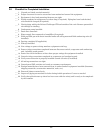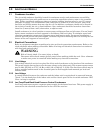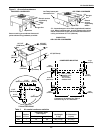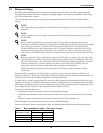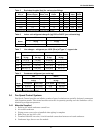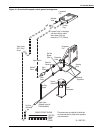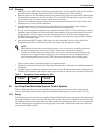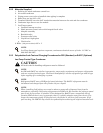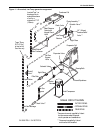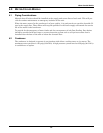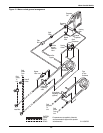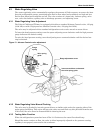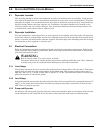
Air-Cooled Models
21
3.5.2 Materials Supplied
1. Built-in pre-wired condenser control box
2. Air-cooled condenser
3. Piping access cover to be reinstalled when piping is complete
4. Bolts (four per leg) 3/8" x 5/8"
5. Terminal block for two-wire 24V interlock connection between the unit and the condenser
6. Condenser legs: four on one-fan models
7. Lee-Temp system:
a. Insulated storage receiver
b. Head pressure control valve with integral check valve
c. Adapter assembly
d. Rotalock valve
e. Pressure relief valve
f. Liquid level sight glass
g. Check valve
8. Bolts - (six per receiver) 3/8" x 1"
3.5.3 Dehydration/Leak Test and Charging Procedures for R22 (Standard) or R407C (Optional)
Lee-Temp Control Type Condenser
NOTE
Lee-Temp heater pad requires a separate, continuous electrical source of either 115 VAC or
200/208/230 VAC.
!
CAUTION
All local codes for handling refrigerant must be followed.
NOTE
As R22 and R407C are similar in properties, proper safety equipment and proper refrigeration
tools are required on both types. Check unit nameplate for correct refrigerant type and oil type
before topping off or recharging a system.
NOTE
Refrigerant R407C uses a POE (polyol ester) lubricant. The R407C refrigerant must be
introduced and charged from the cylinder only as a liquid.
NOTE
When installing field piping, care must be taken to protect all refrigerant lines from the
atmosphere, especially when using refrigerants with POE oils. Do not allow the piping to stand
open to air for more than 15 minutes. Units designed for R407C have a compressor which
contains POE oil that is very hygroscopic; that is, it quickly absorbs water from the air. The
longer the compressor piping is left open to air, the harder it will be to fully evacuate. If left
open too long, the POE oil may need to be replaced before achieving the required vacuum level.



